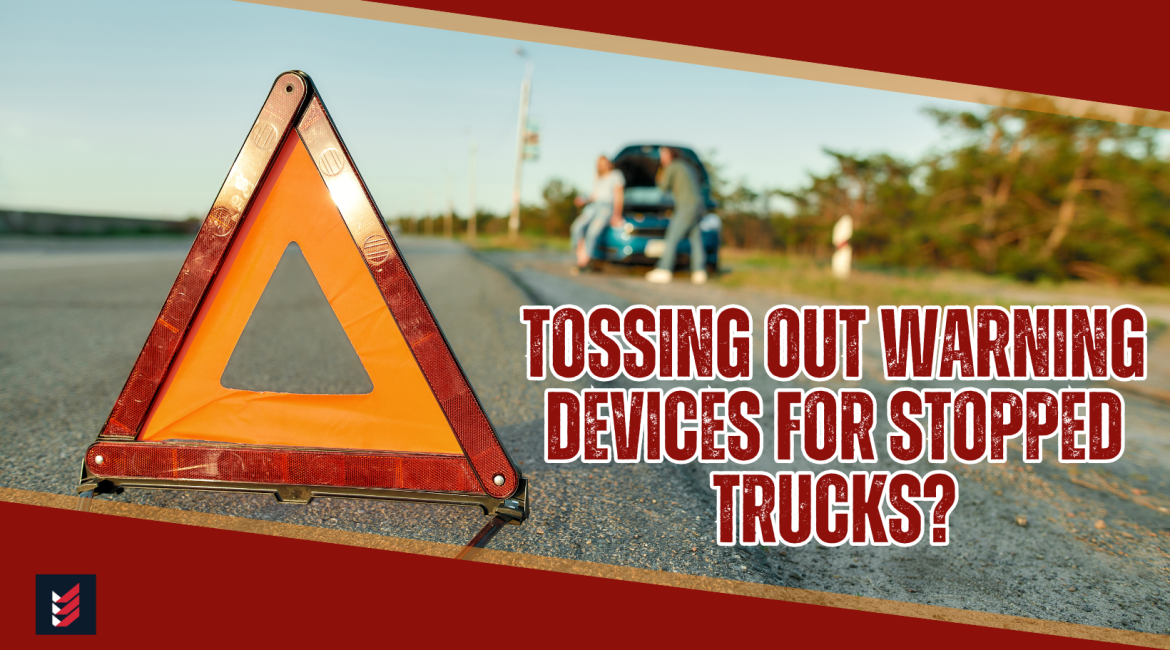Tossing out warning devices for stopped trucks: WASHINGTON (AP) — Two self-driving truck companies have told regulators that their technology for alerting drivers to a truck stopped on the side of the road is safe enough to replace traditional reflective signs and road flares.
Waymo LLC and Aurora Operations Inc. have requested that the Federal Motor Carrier Safety Administration exempt their highly automated (Level 4 and Level 5) trucks from regulations requiring such roadside warning devices for five years. If the FMCSA approves the exemption, the companies can use cab-mounted beacons instead.
“Waymo and Aurora believe they can achieve the safety purpose of the warning device in an alternative manner by mounting forward- and rearward-facing amber flashing lights on the cab at a height above the upper edge of the side view mirrors,” FMCSA stated in a notice published in the Federal Register on Friday, March 3.
“Waymo and Aurora independently tested variants of such devices and concluded that the use of cab-mounted warning devices was equally or more effective in allowing road users to recognize and react to the potential hazard presented by the stopped [truck].”
The companies specifically seek an exemption from two regulations concerning roadside warning equipment: the types of devices allowed and their placement.
Regulations require drivers to use three emergency reflective triangles or three to six road flares, depending on the type, as a warning to other drivers when a truck stops on a highway or shoulder for any reason other than necessary traffic stops.
The regulations require the installation of the devices in three locations within 10 minutes.
- On the traffic side, four paces (about 10 feet) from the vehicle, facing oncoming traffic.
- 40 paces (about 100 feet) from the vehicle, in the direction of approaching traffic, in the center of the traffic lane or shoulder.
- 40 paces (about 100 feet) from the vehicle, in the direction away from approaching traffic, in the center of the traffic lane or shoulder.
- Furthermore, if the truck is stopped within 500 feet of a curve, hill crest, or other obstruction, the warning device must be placed up to 500 feet away from the truck.
Exemptions from Steady-Burning Lamp Requirements
Waymo and Aurora also want an exemption from the requirement that exterior lamps be steady-burning because the cab-mounted devices for which they seek an exemption are flashing lamps.
“Except turn signal lamps; hazard warning signal lamps; school bus warning lamps; amber warning lamps or flashing warning lamps on tow trucks and commercial motor vehicles transporting oversized loads; and warning lamps on emergency and service vehicles authorized by state or local authorities,” according to the regulation.
Exemptions from regulations governing truck safety equipment are becoming more common as autonomous vehicle (AV) technology advances and more carriers install products that tech companies claim will result in fewer crashes and fatalities. However, safety advocates argue that such exemptions can be dangerous.
“Granting individual five-year exemptions is arbitrary, sets an unsafe precedent for other AV companies to receive similar treatment, and allows roadway users across the country to unknowingly participate in lab tests without consent,” said Zach Cahalan, executive director of the Truck Safety Coalition, in an interview with FreightWaves.
“The FMCSA must demonstrate leadership by completing its ongoing rulemaking on the safe integration of ADS driving systems. It establishes clear, well-thought-out safety standards applicable to all AV trucking companies, such as requiring a human driver during Level 4 and 5 testings.”
